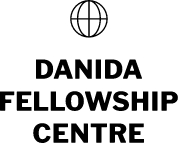Postharvest losses and value chain of orange
Outputs
Abstract:
The aim of this study was to investigate the marketing and postharvest losses of orange in the Morogoro region of Tanzania. A total of 70 respondents were involved in this study mainly farmers, local retail traders, village middlemen and wholesale traders of orange. Data was collected through questionnaires, semi-structured interviews, and other qualitative means including field observations. Data collection was done between February to April 2012 during minor season of orange production. The average postharvest loss from farm-gate to local retail market level was about 48%. The highest average postharvest loss of almost 18% was reported by the local retail traders and the least postharvest losses were experienced by farmers. The principal causes of losses were microbial decay and mechanical damages mainly due to abusive handling and inappropriate storage facilities. When it comes to marketing, majority of farmers (about 63%) preferred the middleman as their marketing channel due to its convenience. Transportation difficulty, unreliable buyers and prices control by middlemen were the main marketing challenges encountered by farmers, while traders in urban markets also reported lack of storage, transport difficulty and poor marketing infrastructure as their main challenges. In addition aspects of orange production are reviewed.

